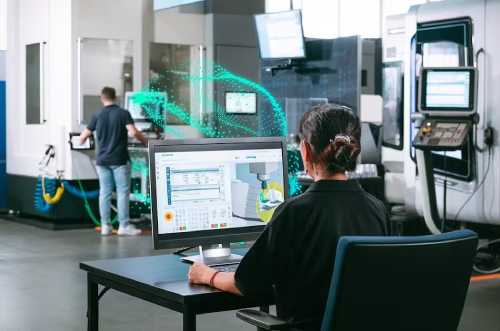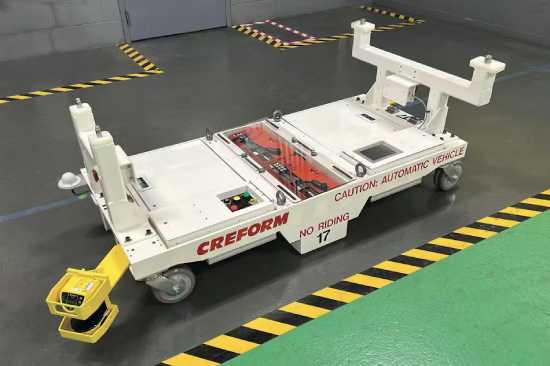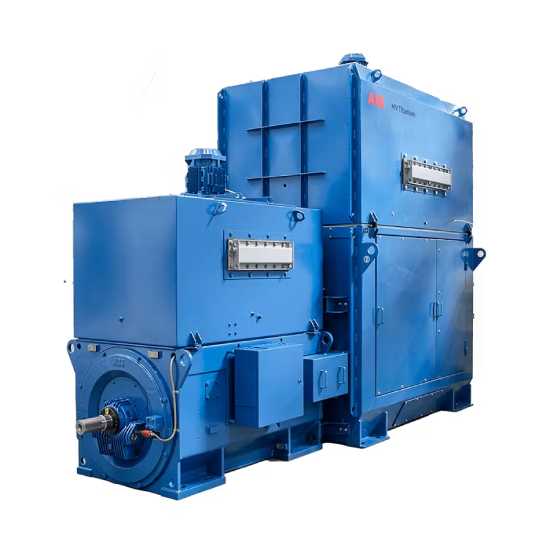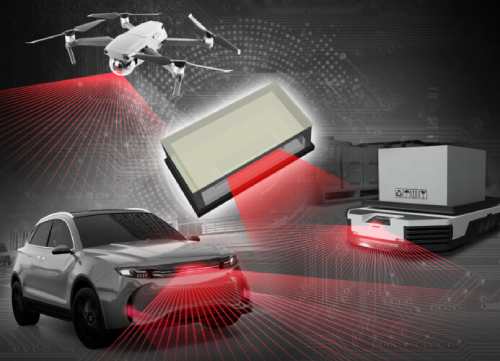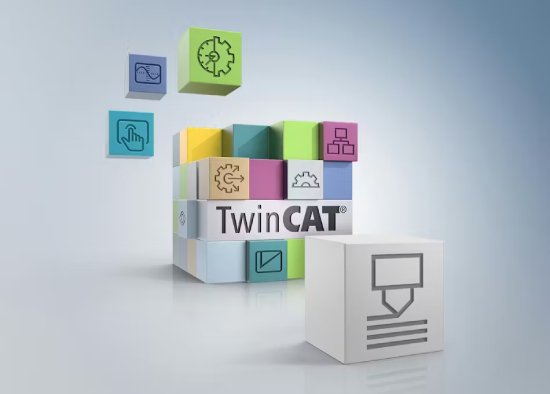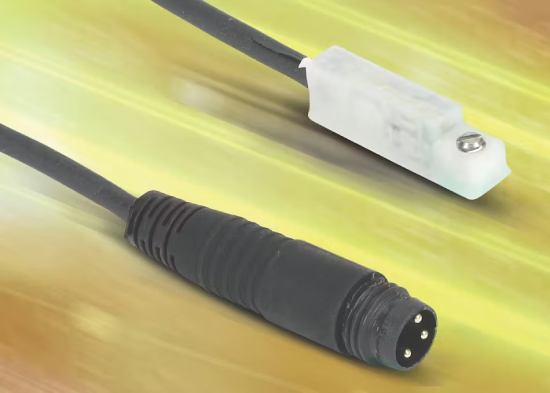The new system software Sinumeric V6.20 brings new technology functions for Sinumerik One that simplify machine tool operation, reduce machine wear and increase manufacturing productivity. With the new Y-turning function, Sinumerik One can be used for machines that turn from the Y-axis, enabling up to 3x the feed rate. The Advanced Rapid Movement function enables time-optimized movement, allowing for machining to be up to 10% faster. It also comes with Reduced Dynamic Mode function and numerical control kernel function that enable the machine tool builder to automatically transfer the machine to reduced operation if the axis becomes too warm.
Latest News:
Automation & Control Products
Creform has built an AGV (automated guided vehicle) to transport heavy frames. The Creform model HA-B Bi-directional AGV measures approximately 80-in. L x 28-in. W x 30-in. H and meets CAT3 requirements. Each end of the AGV follows the guide path independently while the dual drive wheels give the AGV high load capacity and the ability to travel laterally. The unit provides a 90° or 180° spin turn and can travel at speeds up to 50 m/min with a load capacity of 4400 lbs. Powered by 24V batteries, the AGV route features 10 stops and can run two shifts per day. The vehicle stops automatically and starts when released by the traffic control system. The AGV’s batteries are automatically charged by pulling into the charging stations positioned along the route.
Growth in Industry 4.0, Smart Factory, IoT/IIoT and automation is driving demand for OKW’s updated NET-BOX wall-mount enclosures.
Slim, stylish NET-BOX is now available with IP 65 protection. It is ideal for building management, central control systems, data acquisition, data systems engineering, gateways, measurement, supervision terminals and medical/wellness devices.
NET-BOX’s simple three-part assembly comprizes a bottom part, a curved front cover and a front lid that conceals connectors and cables. This smart design offers plenty of room for electronics and interfaces. No fixing screws are visible at the front, enhancing the enclosures’ aesthetics.
These UV-stable ASA+PC (UL 94 V-0) enclosures are available in two virtually identical versions. Version II offers faster installation because the mounting points on the bottom part are pre-drilled ready for the wall mounting screws.
A three-point wall mounting system on both versions means there is no need to open the main electronics section. Only the front lid has to be refitted after installation. The assembly screws are Torx T10 to deter tampering. Inside, the bottom section has screw pillars for PCBs and assemblies.
NET-BOX is available in three sizes: 5.51″ x 5.51″ x 1.83″, 7.09″ x 7.09″ x 1.91″ and 8.66″ x 8.66″ x 1.99″. The standard color scheme is light gray (RAL 7035) for the front cover and lid with a lava bottom part.
Accessories include infill covers (that increase enclosure capacity), IP 65 sealing kits, anti-slide feet for desktop use, a Torx T10 screwdriver and self-tapping PZ1 screws for PCBs.
OKW can supply NET-BOX fully customized. Services include: CNC machining, lacquering, printing, laser marking, special materials, RFI/EMI shielding and installation/assembly of accessories.
ABB’s MV Titanium is a speed controlled, industrial motor in the 1-to-5-megawatt (MW) range that delivers connectivity and control features in one specification and installation package. The MV Titanium concept was designed to address the main obstacles related to installing a drive with a large motor. These include not only the initial cost of a separate drive, but also its associated electrical house, transformers, switchgear and cabling. Furthermore, it has intelligence built in, with analytical and connectivity capabilities for integration into existing systems. It also provides software libraries and interfaces for process monitoring and optimization. The MV Titanium motors are intended for use with pumps, compressors and fans to reduce energy consumption by up to 40%.
125W × 8ch high-power array significantly improves measurement distance and resolution in LiDAR applications.
ROHM has developed a high output laser diode – RLD8BQAB3 – for use in ADAS (Advanced Driver Assistance Systems) equipped with LiDAR for distance measurement and spatial recognition. ROHM will initially start supplying samples targeting consumer and industrial applications such as drones, robot vacuum cleaners, AGVs (Automated Guided Vehicles), and service robots.
LiDAR is seeing growing adoption in recent years across a variety of applications that require automation such as automotive ADAS, AGVs, drones, and robot vacuums, facilitating precise distance measurement and spatial recognition. To detect information at greater distances with more accuracy, there is a need for laser diodes that serve as light sources to achieve high kW-level output while allowing multiple light sources to emit light at close intervals.
ROHM has established proprietary patented technology that achieves the narrow emission width of lasers, enhancing the long-distance, high accuracy LiDAR, beginning with the commercialization of the 25W output RLD90QZW5 in 2019 and high-power 120W RLD90QZW8 in 2023. Building on these successes, we have developed a new 125W 8ch (1kW class) array-type product that meets the demand for a high output, high performance laser diode.
The RLD8BQAB3 is an ultra-compact surface mount high-output 125W × 8ch infrared laser diode for LiDAR applications that utilize 3D ToF systems to carry out distance measurement and spatial recognition. The optimized design features 8 emission areas (each 300µm wide) per element, installed on a submount affixed to a high heat dissipation substrate.
The package’s emitting surface incorporates a clear glass cap – an industry first for a surface mount laser diode – eliminating the risk of light scattering caused by scratches during dicing that tends to occur with resin-encapsulated products, ensuring high beam quality. Each emission area is wired with a common cathode, enabling the selection of the irradiation method based on application needs – ranging from individual emission that increases the number of light-emitting points to industry-leading* simultaneous emission at ultra-high outputs of 1kW class.
The new product retains the key features of ROHM’s conventional laser diodes, including uniform emission intensity across the emission width along with a low wavelength temperature dependence of 0.1nm/°C (vs 0.26 to 0.28nm/°C for standard products). On top, the array configuration narrows the regions of reduced emission intensity between channels, while the bandpass filter minimizes the effects of ambient light noise from the sun and other sources, contributing to long-distance detection and high-definition LiDAR.
Beckhoff has adding two new functions and two technology packages to its TwinCAT 3 CNC software. TwinCAT 3 CNC Online Adaption offers TcCOM interfaces that integrate customer-specific modules for the online control of interpolation functions such as dynamic contour control to compensate for contour errors caused by physical deformation of the toolbox; a tool radius compensation function offers online compensation for factors such as the current tool radius, path position and path tangent; and a geometric feed rate adjustment is used to calculate a feed override factor to achieve a constant surface feed. TwinCAT 3 CNC Extended Interpolation enables two-path interpolation, allowing two independent contours to be described in a single NC channel. TwinCAT 3 CNC AM Plus makes programmed contour elements available to the PLC in advance and can be activated in the NC program or via the standard PLC interface. TwinCAT 3 CNC EDM Plus is a special technology package for wire-erosion and die-sinking EDM machines.
AutomationDirect has added Nitra CPS9E series cylinder position switches, which are compact general-purpose switches designed to detect the position of a pneumatic cylinder's magnetic piston. This feedback can be used by a control system to determine cylinder position, cycle count and to confirm operation. These switches are manufactured specifically to fit into extruded or machined 1/4-in. 60° dovetail slots. They are superior to reed switches since they use solid-state technology with no moving parts for a longer life. They are available in PNP or NPN logic, with a normally open output, and a flying lead pigtail or a 3-pin M8 electrical connection with a 90° cable exit.

Weidmuller releases two new PACs in the u-Control series, capable of running widely used automation software and communicating to enterprise-level servers.
A PAC is a computer used for advanced motion control, process automation, and data processing, also referred to as computer-controlled automation. The PAC acts as a gateway between IT and OT, two worlds that typically do not agree with each other. Weidmuller recently released two new PACs designed specifically for IT/OT convergence.
U-Control M3000/M4000
The u-Controllers from Weidmuller are packed with features that allow you to build a stable and secure IT/OT gateway or an automated cell driven by a computer instead of a PLC. All the electrical connections feature Weidmuller’s push-in connection technology, reducing wiring time and troubleshooting. Additional interfaces, such as Wifi or LTE communications, can be added to the provided expansion slot. Under the hood, the u-Control series PACs use Multicore technology, with the M4000 utilizing a quad-core processor, allowing multiple runtime applications to execute simultaneously. Like a PC, PACs have an operating system; however, only the u-Control series of PACs use the u-OS, an open-source operating system capable of running Codesys.
u-Control Software
With the M3000 and M4000 using a non-standard OS, the type of software capable of being installed is limited. The automation industry typically uses software such as Codesys, an open-source programming software. Node-Red is a graphical flow chart editor that creates runtime applications. Each node can be a hardware device, an API, or an online service. These nodes are then wired together in a visual flow chart design. Ignition is another software supported on the new u-Control PACs. The software creates HMI applications used to interact with PLCs and other controllers. Ignition is also used as a communication interface between PLCs and databases.
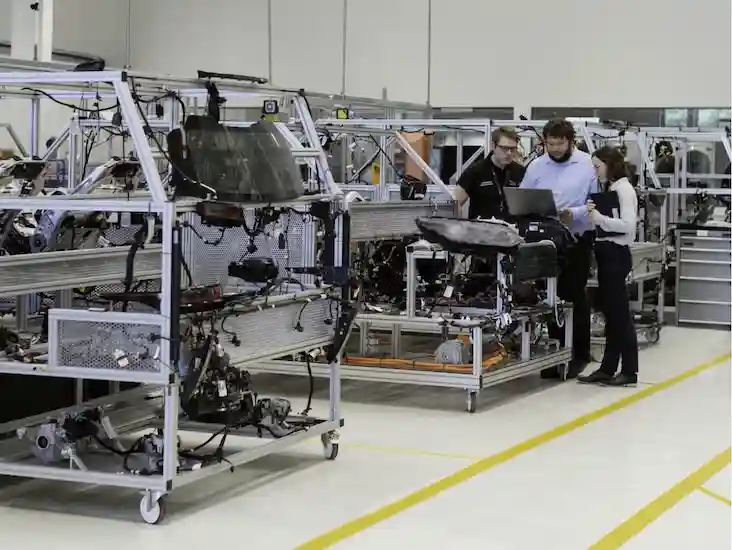
Edge Computing
An edge computer is a PC that acts as a gateway between two devices, such as a PLC and a server. PLCs typically cannot communicate directly with data collection servers until the software that allows direct or cyclic messaging over an industrial protocol is installed. An edge computer is a small PC that has this software or drivers installed to allow data from a PLC to be extracted and stored in a database. The edge computer might have a database for short-term data storage, with the expectation to push all data out to an IT server. This topology allows machine builders to provide their customers with standard database access to their data without interfering with the automation controllers.
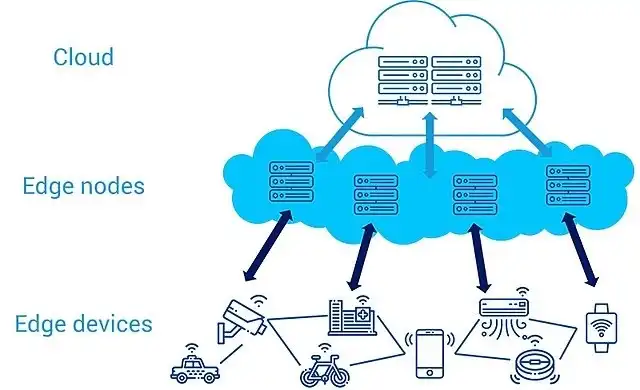
PC Automation
The concept of using a PC to control automation devices is not new. Many companies have tried to convert machine builders to using a PAC or PC automation. By using a PC for automation you gain file management and advanced logging within your controller–things that a PLC cannot do. The downside is troubleshooting and stability; PCs are notorious for rushed updates, crashes, and computer viruses. These disadvantages could cost factories millions of dollars, resulting in physical or personal damage. PC automation has grown in popularity but has not yet become a standard in industrial automation.
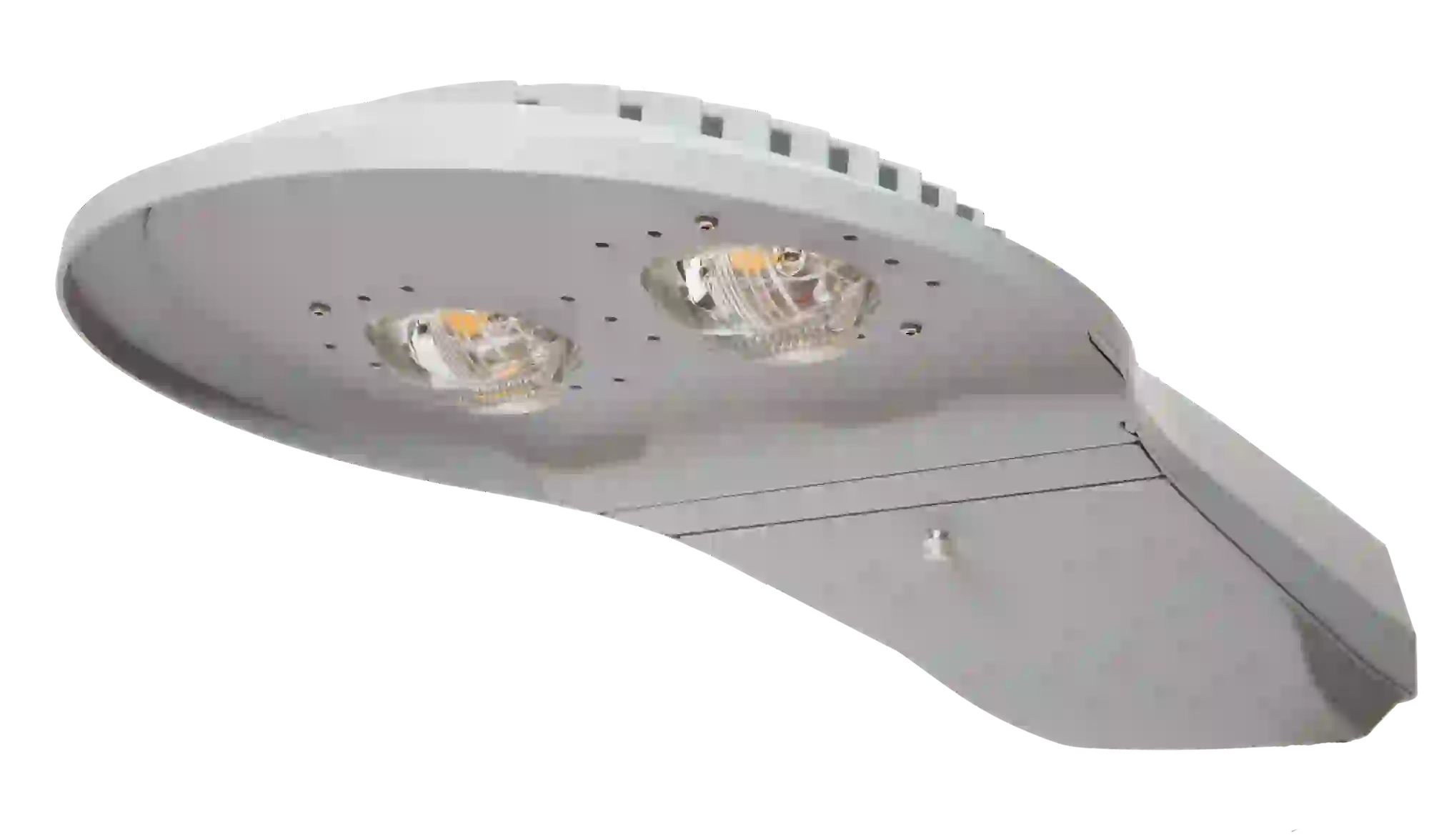
The versatile RoadMax RX2 roadway luminaire traverses a wide range of outputs with a single housing for a cohesive community appearance. Sitting at the center of the RoadMax portfolio, the RX2 reaches from 70-220 watts and connects the specs for your most challenging project. Whether your key to customization is a manual, field adjustable wattage switch (FAO), options to dim with Bluetooth ConnectLED, applying network controls (including DALI), or creating customized optical outputs with a combination of lenses and trespass shields, stock one model for multiple applications. Redefine the road ahead with RoadMax, low-glare streetlight solution. 10-year warranty. 120-480 VAC. 20kV/10kA surge protection.
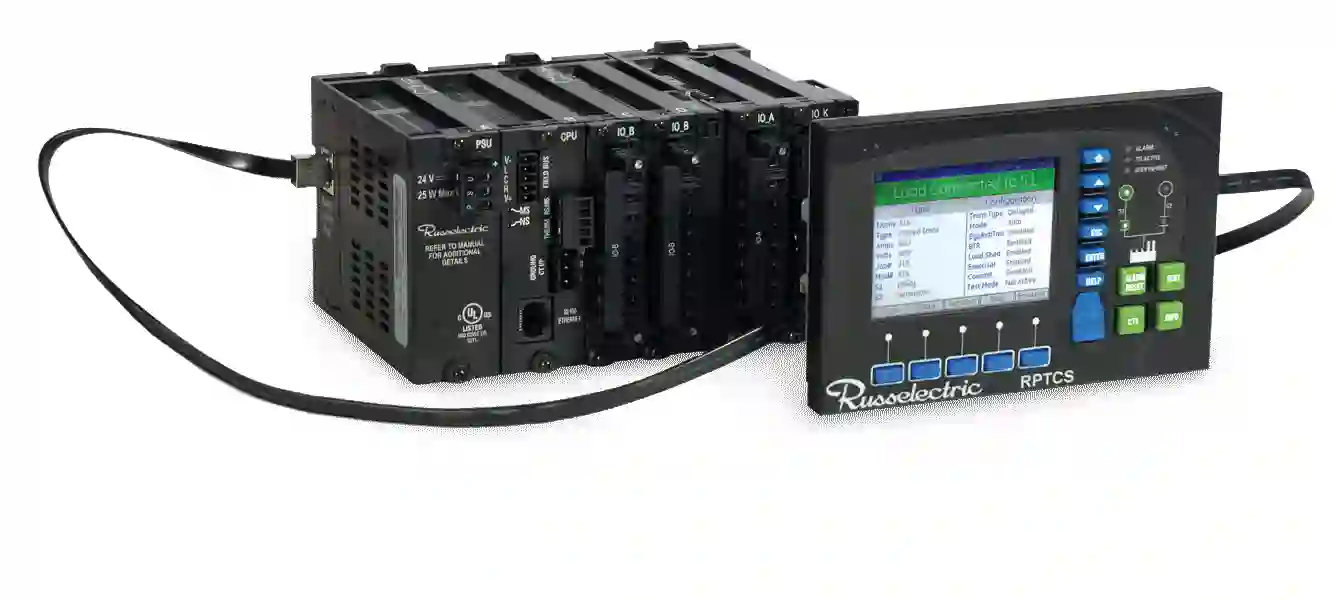
Russelectric, A Siemens Business, a leading manufacturer of power control systems and automatic transfer switches, highlights its system control upgrades for critical power equipment for enhanced reliability, operational control, and ease-of-maintenance. These upgrades are a cost-effective alternative to equipment replacement. By upgrading, customers can experience improved performance and capabilities, updated systems with the latest technology, and a prolonged lifespan for their mission-critical equipment.
Additionally, maintenance requirements are decreased, and serviceability is improved. Russelectric Field Engineers conduct these upgrades, ensuring professional and efficient service. All work is backed by the Russelectric warranty, providing customers with added assurance. These upgrades are completed in a fraction of the time compared to full equipment replacement, offering customers swift improvements without prolonged downtime.
ATS Upgrades
Russelectric offers upgrades to automatic transfer switch/bypass isolation switch control systems during a scheduled shutdown to enhance switch operating accuracy and functionality. Control, monitoring, and communication protocols are upgraded to eliminate concerns about legacy component availability.
Operator Interface Technology and Communications
Upgrade to the latest operator interface technology and communications equipment to significantly enhance system monitoring capabilities. Russelectric will provide detailed information on the current system status through a dynamic one-line graphical interface, along with complete alarm and event history for a quick problem response. In addition, optional TJC (The Joint Commission) reporting and optional remote system access are offered by Russelectric.


